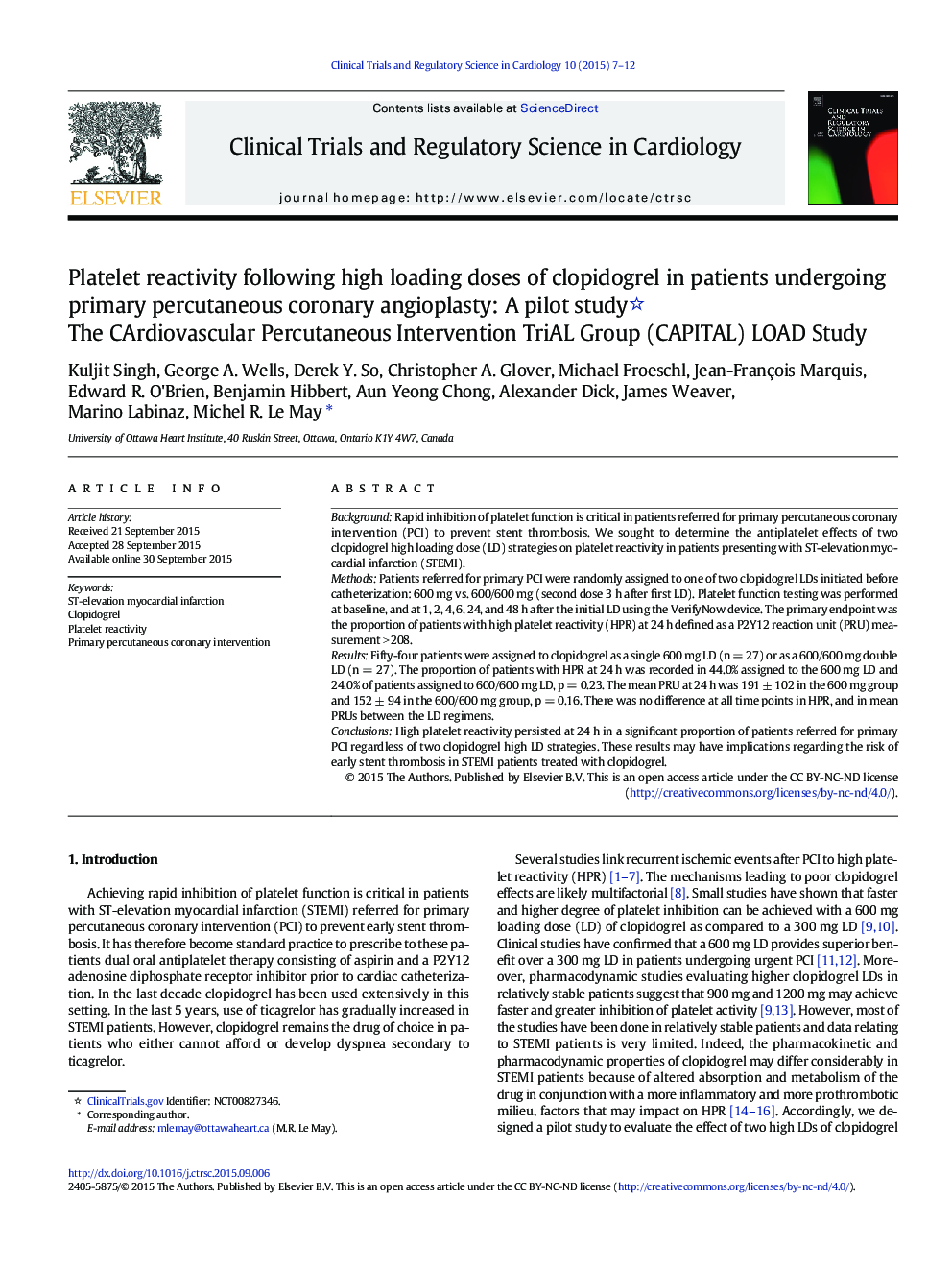| Article ID | Journal | Published Year | Pages | File Type |
|---|---|---|---|---|
| 2498664 | Clinical Trials and Regulatory Science in Cardiology | 2015 | 6 Pages |
BackgroundRapid inhibition of platelet function is critical in patients referred for primary percutaneous coronary intervention (PCI) to prevent stent thrombosis. We sought to determine the antiplatelet effects of two clopidogrel high loading dose (LD) strategies on platelet reactivity in patients presenting with ST-elevation myocardial infarction (STEMI).MethodsPatients referred for primary PCI were randomly assigned to one of two clopidogrel LDs initiated before catheterization: 600 mg vs. 600/600 mg (second dose 3 h after first LD). Platelet function testing was performed at baseline, and at 1, 2, 4, 6, 24, and 48 h after the initial LD using the VerifyNow device. The primary endpoint was the proportion of patients with high platelet reactivity (HPR) at 24 h defined as a P2Y12 reaction unit (PRU) measurement > 208.ResultsFifty-four patients were assigned to clopidogrel as a single 600 mg LD (n = 27) or as a 600/600 mg double LD (n = 27). The proportion of patients with HPR at 24 h was recorded in 44.0% assigned to the 600 mg LD and 24.0% of patients assigned to 600/600 mg LD, p = 0.23. The mean PRU at 24 h was 191 ± 102 in the 600 mg group and 152 ± 94 in the 600/600 mg group, p = 0.16. There was no difference at all time points in HPR, and in mean PRUs between the LD regimens.ConclusionsHigh platelet reactivity persisted at 24 h in a significant proportion of patients referred for primary PCI regardless of two clopidogrel high LD strategies. These results may have implications regarding the risk of early stent thrombosis in STEMI patients treated with clopidogrel.
